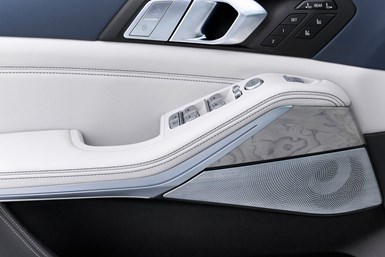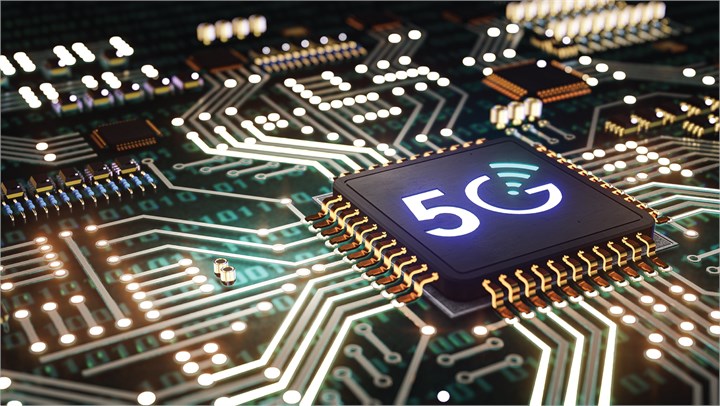DuPont Electronics & Industrial (Wilmington, Del.), a leader in technology-based materials and solutions, has long been a company on the cutting edge of innovation. With megatrends like EVs, autonomous vehicles and 5G connectivity driving innovation in manufacturing, the company is working to offer a host of finishing solutions to advance these trends in an environmentally conscious and sustainable way. According to DuPont, the demand for innovation is being driven by the need for improved performance and cost, as well as the elimination of toxic substances that are harmful to humans and the environment. Recently, the company unveiled a number of sustainable solutions for plastic metallization and electronic component finishing applications with that strategy in mind.
DuPont’s approach is about more than one solution for any single aspect of a process, but offering a system approach with numerous chemistries that work together.
“We’ve focused a lot of energy on creating overarching solution packages — or a system approach — not just one component, but a series of components,” says Eric Huenger, technical sales and service manager for DuPont’s Americas region.
Rethinking the plastic metallization process
In order to promote high performance, and to provide operational advantages, cost savings and sustainable solutions, DuPont has created a novel Ecoposit plastic metallization process that improves the plating capabilities for complex parts.
The company’s Ecoposit plastic metallization process is designed to improve the capabilities of POP while eliminating toxic substances that are found in traditional processes. The result is said to be a more sustainable process that offers performance and cost-improvement opportunities for plating plastic components, including in bimold applications.
The Ecoposit process begins by preparing the plastic surface with Ecoposit CF-800 chrome-free etch, a REACH-compliant pretreatment for ABS and ABS-PC plastic metallization for decorative chrome plating. The product attacks the polybutadiene areas via oxidation and forms caverns, which enables adhesion by mechanical anchoring of plated metals. The etch is designed to be compatible with electroless nickel or electroless copper.
Cataposit PM-959 is designed for plating bimold applications, such as in the interiors of automobiles. Photo Credit: DuPont Electronics & Industrial.
After the plastic surface has been prepared with the etch, a catalyst is applied for both full-body and two-shot bimold catalyzation. For full-body catalyzation, the company designed the Cataposit PM-957 catalyst for full coverage and optimal adhesion at the lowest palladium concentration. And for situations where one plastic part must be fully plated and the other is not plated, such as in the interiors of automobiles, DuPont’s Cataposit PM-959 catalyst is used to deliver the necessary amount of palladium on the plateable part while keeping the non-plated part free from metallization.
Once the catalyst has been applied to the part, the plastic must be made conductive. Traditional conductivity processes such as electroless nickel and copper contain harmful compounds such as ammonia and formaldehyde, which led DuPont to seek alternatives that eliminate their usage in the plastic metallization process. The company has introduced Niposit PM-988, an ammonia-free electroless nickel, and Ecoposit XF-1000, a formaldehyde-free electroless copper process.
DuPont has also launched Ecoposit HT-95 electrolytic copper, which the company says significantly increases metal adhesion to plastic when using chrome-free etching and provides advantages in metal distribution and stress reduction. Ecoposit HT-95 is designed to exhibit high throwing power when compared to popular dyed brighteners, which are said to exhibit low throwing power, poor metal distribution and high deposit stress. According to DuPont, Ecoposit HT-95 solves these issues, thereby saving time, capacity and cost. Applications for the product include plastic metallization for decorative chrome plating.
Improving electronic component finishes
Aside from enhancing its plastic metallization processes, DuPont Electronics & Industrial has also invested resources into improving electronic connector components. DuPont suggests that recent technological advancements such as electric vehicles and 5G connectivity are driving changes in connector finishing.
The shift to electric and autonomous vehicles and 5G connectivity drives electronic systems to higher power, voltage and temperatures, demanding interconnections with higher reliability and improved signal integrity. Low wear, low contact resistance, low corrosion and consistent performance over extended lifetime are some of the requirements being addressed. Since the signals must be shielded from electromagnetic interference (EMI), new applications for the metallization of plastic housings have been developed to protect the electronic components.
The company has designed a range of electronic component finishes and chemistries that are aimed at providing these emerging markets with sustainable solutions and greener processes.
One of DuPont’s newly introduced finishes is Nikal BF-100 Electrolytic Nickel, a boric acid-free nickel electrolyte that features improved corrosion resistance compared to conventional nickel. The company says Nikal BF-100’s improved gold porosity enables a thinner layer of gold to achieve the same corrosion resistance as conventional nickel. Nikal BF-100 reportedly offers high throw, reduced deposit stress and simplified handling and operation; it is said to be compatible with barrel, rack and reel-to-reel plating equipment. The product also enables metal distribution in components that feature recessed and hidden areas.
To provide protection in electronic environments that have high voltage, power, current or temperature, DuPont designed Silveron GT-210, a cyanide-free silver electrolyte. Silveron GT-210 is said to produce deposits that exhibit exceptional wear characteristics and low friction. When compared to traditional silver, this product reportedly has very low coefficient of friction (CoF) and low wear without lubrication; it also exhibits low and stable contact resistance.
For electronic and industrial finishing, DuPont created the Solderon ST-400 high-speed matte tin. The product reportedly provides superior electrolyte stability and deposit performance, as well as a 40% higher plating speed compared to the previous version. Solderon ST-400 is said to boast an improved, stable current density range, low foaming, sludge rate and whisker formation (<25 µm in all storage conditions), as well as excellent solderability performance after bath aging. According to DuPont, Solderon ST-400 is suitable for high-speed reel-to-reel, strip and wire plating and is comprised of environmentally benign components.
DuPont has also designed the Teleposit 8000 liquid crystal polymer (LCP) metallization process for high-frequency applications such as connector housings, mmWave antennas and LCP substrates that require metallization. DuPont says Teleposit 8000 enables consistent coverage and adhesion without requiring the use of traditional methods of adhesion through surface roughening. Teleposit 8000 is said to be compatible with glass and mineral-filled materials, and it is suited for electroless nickel and electroless copper processes.
Eliminating toxic compounds
DuPont is working to address health and safety concerns within other areas of finishing as well, particularly in applications where toxic compounds come into contact with humans or the environment. Nickel compounds, which are known to be carcinogenic, are regulated in applications where people come into contact with the surface finish, whether it be with their skin or on their food or beverages. According to DuPont, a common solution for this is to replace the nickel compound with cyanide white bronze or palladium. Desiring a process that eliminated the use of toxic compounds altogether, DuPont designed the Ronalloy GT-300 process, a cyanide-free white bronze electroplating bath that reportedly improves current efficiency compared to cyanide white bronze. Ronalloy GT-300 can plate up to 15 microns, and the deposit is said to result in a uniform appearance, good corrosion resistance and adhesion on copper and copper alloys.
DuPont’s efforts to eliminate toxic compounds in its product portfolio, as well as its revision of the plastic metallization process and electronic component finishes, solidify the company’s status as a leader in technology-based materials and solutions. DuPont’s contributions steer the surface technology industry toward safer, more sustainable and cost-effective methods and practices.
Related Content
Checon Expands Market Offering with Acquisition of Umicore Electrical Materials USA, Inc.
The company is strategically working to meet future growth opportunities surrounding the use of precious metals and conductive materials like copper and aluminum.
Read MoreFinishing High Reliability, Function Critical Parts
From safety critical automotive and aerospace components to lifesaving medical micro-components and implantable devices, Indiana-based Electro-Spec finishes applications that require zero failure rates.
Read MoreRead Next
Episode 45: An Interview with Chandler Mancuso, MacDermid Envio Solutions
Chandler Mancuso, technical director with MacDermid Envio discusses updating your wastewater treatment system and implementing materials recycling solutions to increase efficiencies, control costs and reduce environmental impact.
Read MoreA ‘Clean’ Agenda Offers Unique Presentations in Chicago
The 2024 Parts Cleaning Conference, co-located with the International Manufacturing Technology Show, includes presentations by several speakers who are new to the conference and topics that have not been covered in past editions of this event.
Read MoreEducation Bringing Cleaning to Machining
Debuting new speakers and cleaning technology content during this half-day workshop co-located with IMTS 2024.
Read More























